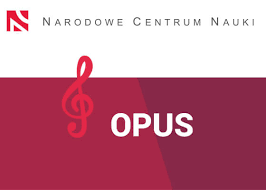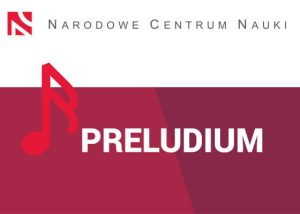Experimental mineralogy on lead apatites
Basic research on the synthesis of natural analogs of apatites, their mechanisms of formation, crystalline structure, properties (particularly solubility constant), thermodynamics, substitution by major and trace elements, particularly As, V and REE. The most current projects involve predictions and determination of thermodynamic properties of apatites as well as experimental investigation of the reaction between cerussite (PbCO3) or anglesite (PbSO4) and solutions containing AsO43- under various conditions promoting mimetite formation. Precipitation of mimetite may provide new insights into As immobilization, which may be relevant for remediation of contaminated natural waters. Research supported previously and currently by research grants HARMONIA, OPUS, PRELUDIUM.
Beneficiation of REE by precipitation of lead apatites
A new extraction process of REE from apatites is targeted and innovative mineral processing route (leaching followed by selective and effective separation of REE carriers) is experimentally explored.
Rare earth elements (REE) are considered as critical materials since they are particularly used in the energy sector and many new electronic and advanced components. Over the last few years China has achieved a monopolistic role in all segments of the REE value chains. REE-rich apatites, associated with iron ores in Europe, are being disposed in large quantities rather than being recovered due to lack of technologies of REE recovery. This is an international research effort (in collaboration with Uppsala University) currently funded by Swedish ÅForsk Foundation.
Transformation of monazites into REE-bearing lead apatites
research project funded by NCN PRELUDIUM-bis: PhD student – Kacper Staszel
Age and mechanisms of metamorphism –
Geological Polar Expeditions to Spitsbergen Geological Polar Expeditions to Spitsbergen are organized and co-organized by M.Manecki since 1983, currently run by J.Majka and K.Kośmińska and extended to Elesmere Iceland near Greenland. The topic covers broad geological research on crystalline basement of Svalbard Archipelago. This is a large research program in international collaboration with Sweden, Norway, Germany, Slovak Republik and USA. This research effort, started by Prof. emeritus Andrzej Manecki, Honorary Professor of AGH, is currently run mostly by Jarosław Majka and Karolina Kośmińska. Program supported previously and currently by numerous research grants from KBN, MNiSW, OPUS, PRELUDIUM etc.
Aeromineralogy
Mineral, chemical and microbial composition and distribution of airborne particulate matter in polluted areas of large agglomerations, national parks etc. Current research effort is oriented at indoor environments and health benefits, rather than health risks. The mechanisms of self purification of the air in salt mines is explored and the beneficial effects (haloterapy) of both, salt aerosol and extremofile microorganisms (archeons) is investigated. This basic research is of very high societal importance. Current collaborators include Bochnia Slat Mine and University of Łódź. The research grant proposal is in preparation to further generate the funds and international collaboration on this hot topic of interdisciplinary research.
conference abstract – Goldschmidt Geochemical Conference in Barcelona 2019
conference presentation – Self-purification of ambient air in the underground Bochnia Salt Mine
Geomicrobiology of mineral-water interaction
Geomicrobiology of mineral-water interaction in areas polluted with Pb and As is investigated by model laboratory experiments involving growth of bacteria and fungi in precisely controlled environment. The research focuses on quantification and mechanisms of microbial active scavenging for nutrients by selective dissolution of minerals, when nutrients deficient conditions impose stress on living organisms. This research was financed by MNiSW grant.
Mineral analogs in technology
Potential technological applications of synthetic analogs of minerals are experimentally investigated. Solid solution series are synthesized and the photochemical properties are inverstigated. Currently, the catalytic properties based on the photo-degradation of methylene blue is being studied using analogs of natural stannite sulfosalts Cu2(FexMnx-1)SnS4 solid solutions (semiconductors) and various 3D hierarchical superstructures of libethenite Cu2PO4OH – olivenite Cu2AsO4OH solid solutions. The effect of isomorphic substitution in the structures on photocatalytic properties will be determined to optimize the procedure of synthesis. The possible mechanism of enhanced photocatalytic activity will be proposed. This project was funded by Diamentowy Grant, and currently it is a topic of NCN PRELUDIUM grant lead by Edyta Waluś.



